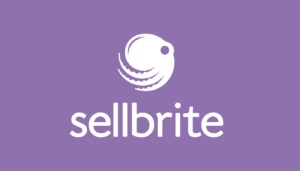Step-by-Step Guide to Start Selling on Amazon
Step 1: Choose Your Business Model
Individual vs. Professional Selling Plan
- Individual Plan: Suitable for those selling fewer than 40 items per month. No monthly subscription fee but incurs $0.99 per item sold.
- Professional Plan: Ideal for higher volume sellers. Costs $39.99 per month, regardless of sales volume, plus additional selling fees.
Fulfillment Method
- Fulfillment by Amazon (FBA): Amazon handles storage, packaging, and shipping. Higher fees but can provide Prime eligibility and easier logistics.
- Fulfillment by Merchant (FBM): You handle storage and shipping. Lower fees but more logistical responsibility.
Step 2: Register for an Amazon Seller Account
Visit Amazon Seller Central
Sign Up
- Choose either Sell as an Individual or Sell as a Professional.
Provide Required Information
- Legal business name and address
- Contact details
- Identity verification documents
- Credit card and bank account information for payments
Step 3: Set Up Your Seller Profile
Login to Seller Central
Navigate to Account Information
- Update your business information, shipping settings, and return policies.
Create Your Storefront (Optional)
- Customize your Amazon Storefront with a logo, business name, and description.
Step 4: Research and Choose Your Products
Product Research
- Identify a niche: Focus on a specific product category or market gap.
- Analyze competitors: Use Amazon to evaluate competition, pricing, and reviews.
- Use tools: Utilize tools like Jungle Scout, Helium 10, or AMZScout for detailed market research.
Product Sourcing
- Find suppliers: Use platforms like Alibaba, trade shows, or direct manufacturers.
- Evaluate Samples: Order samples to assess quality.
- Negotiate Terms: Discuss pricing, minimum order quantities, and shipping.
Step 5: Create Product Listings
Add Product
- Go to Inventory and select “Add a Product”.
Create a New Product Listing
- Product Title: Include relevant keywords.
- Product Description: Highlight features and benefits.
- Bullet Points: Key product details and unique selling points.
- Search Terms: Relevant keywords for SEO.
- High-Quality Images: Clear, professional photos from various angles.
Set Pricing
- Consider production costs, Amazon fees, and competitive pricing.
Step 6: Optimize for SEO
Keywords
- Research: Use keyword tools to find relevant terms.
- Implement: Integrate keywords into titles, descriptions, and search terms.
Product Detail Page
- Enhanced Content: Use Amazon A+ Content (for brand-registered sellers) to enhance product descriptions with multimedia elements.
- Customer Reviews: Encourage reviews for credibility.
Step 7: Manage Inventory
Inventory Management
- Track Stock Levels: Monitor inventory to avoid stockouts.
- Reorder: Set up automatic reorder points or notifications.
Fulfillment Strategy
- Ship Inventory to Amazon (FBA): Prepare and ship products according to Amazon’s guidelines.
- Self-Fulfill Orders (FBM): Handle storage and shipping yourself.
Step 8: Launch and Promote Your Products
Launch Strategy
- Promotions: Offer discounts or coupons to attract initial sales.
- Amazon PPC: Set up Pay-Per-Click advertising campaigns to boost visibility.
External Traffic
- Social Media: Promote through social channels.
- Email Marketing: Send marketing emails to potential customers.
Step 9: Monitor Performance and Optimize
Analytics
- Sales Reports: Track sales, revenue, and expenses in Seller Central.
- Customer Feedback: Use reviews and feedback for product improvement.
Optimization
- Adjust Listings: Modify product descriptions, images, and keywords based on performance data.
- Refine Ads: Optimize advertising campaigns for better ROI.
Step 10: Scale Your Business
Expand Product Line
- Add New Products: Introduce complementary or trending items.
- Diversify: Explore different categories or niches.
Automate and Outsource
- Automation Tools: Use software for inventory management, repricing, and customer service.
- Outsource: Delegate tasks like fulfillment, customer support, or marketing.
By following these steps, you can effectively set up and grow your business on Amazon. Be prepared to adapt and optimize as you learn more about the marketplace and your customer preferences.



















